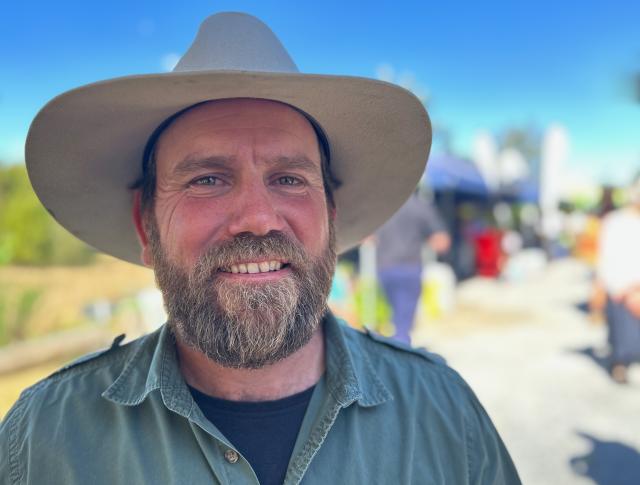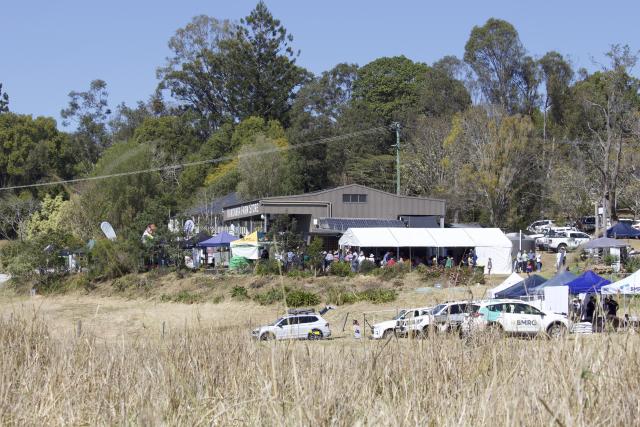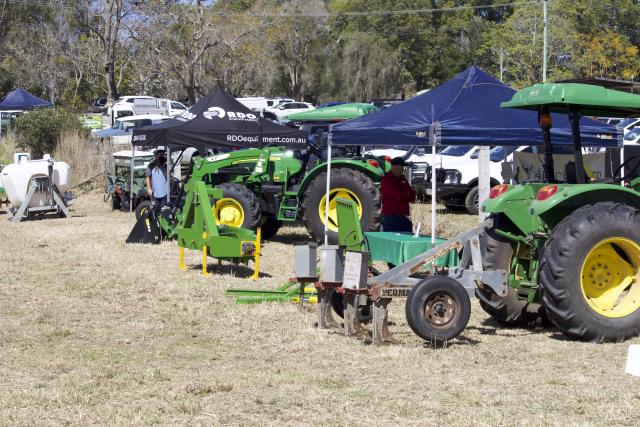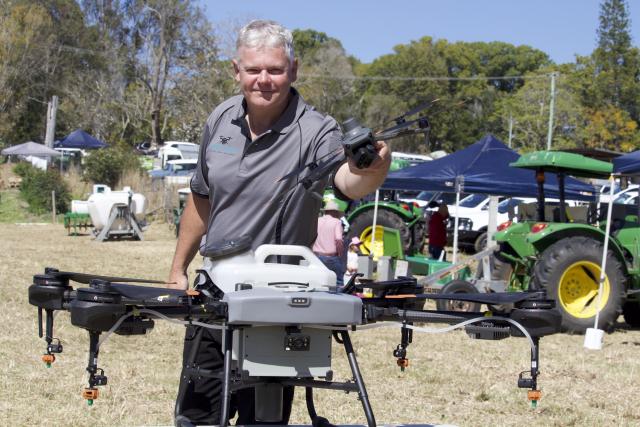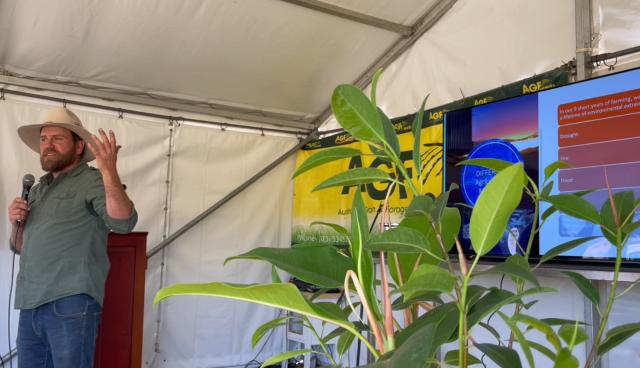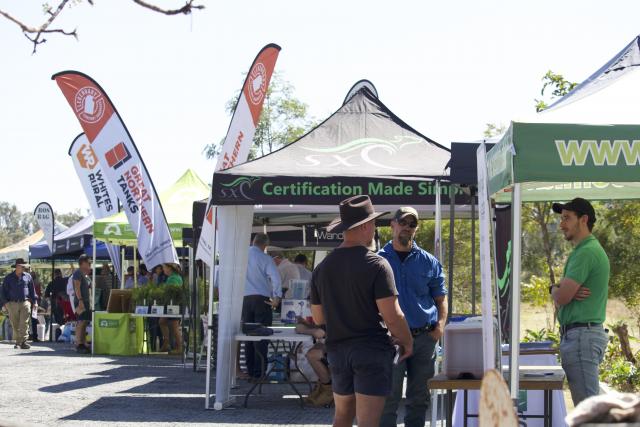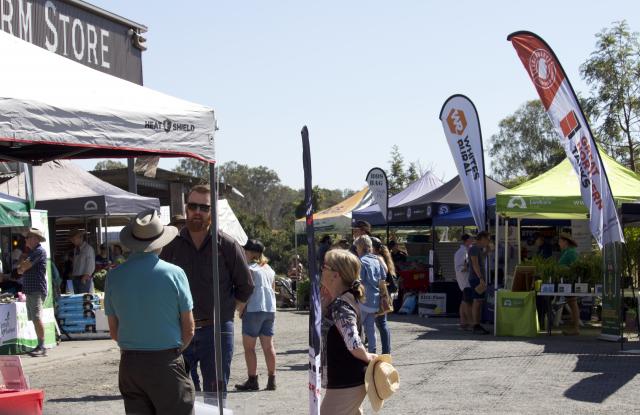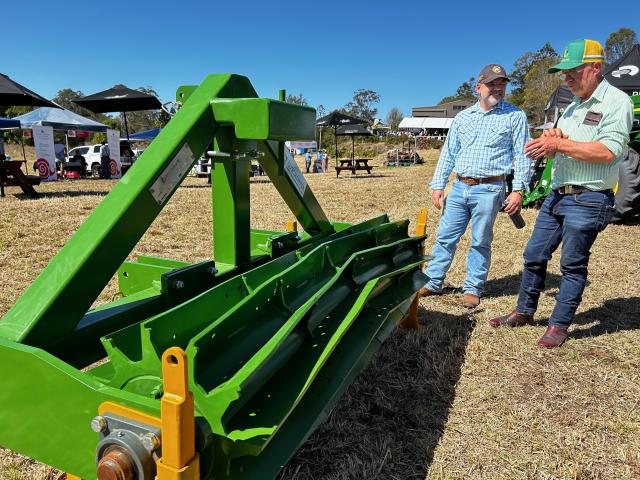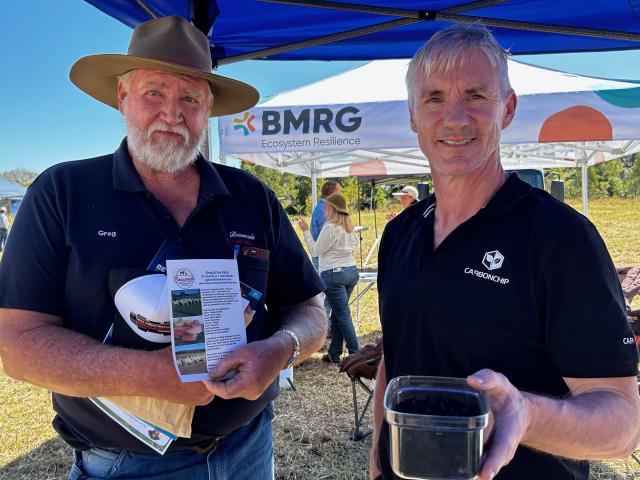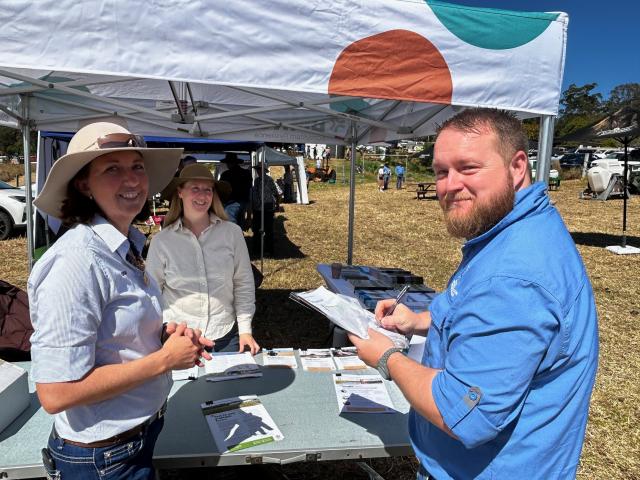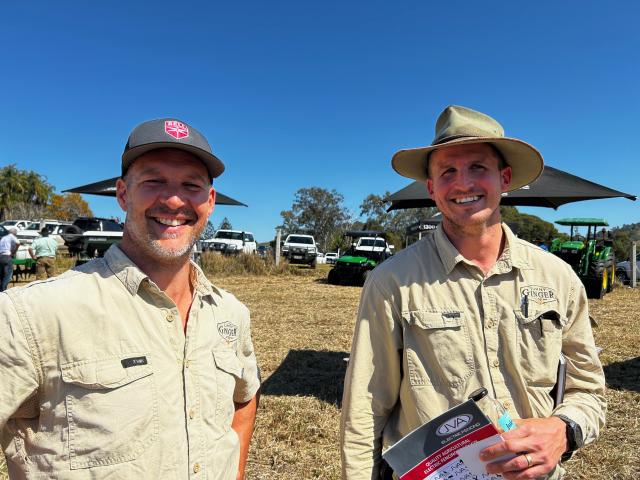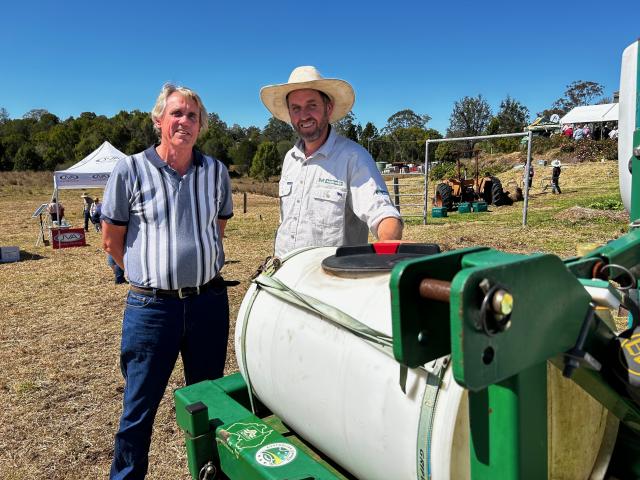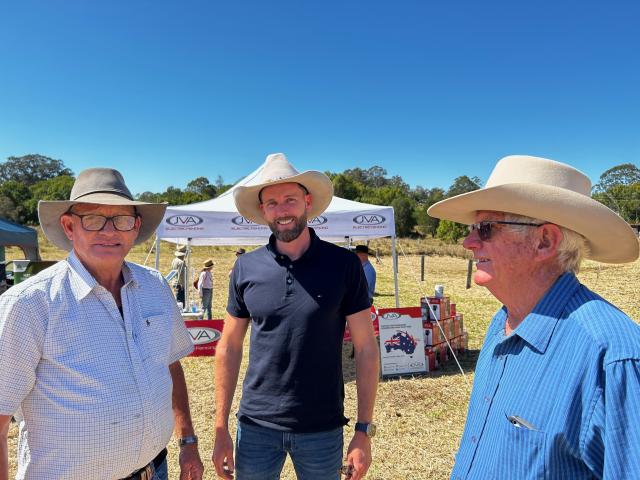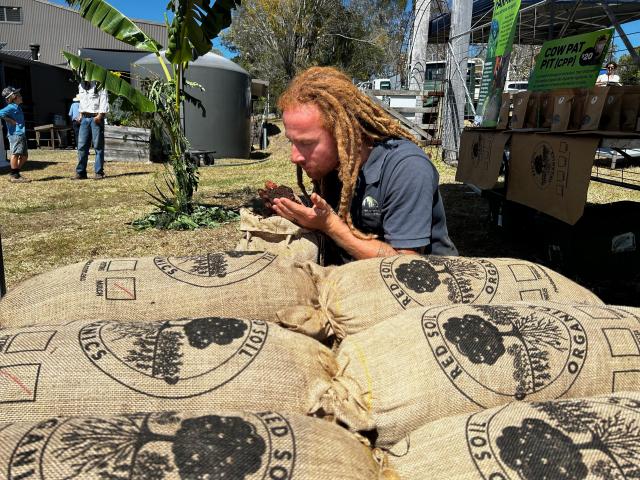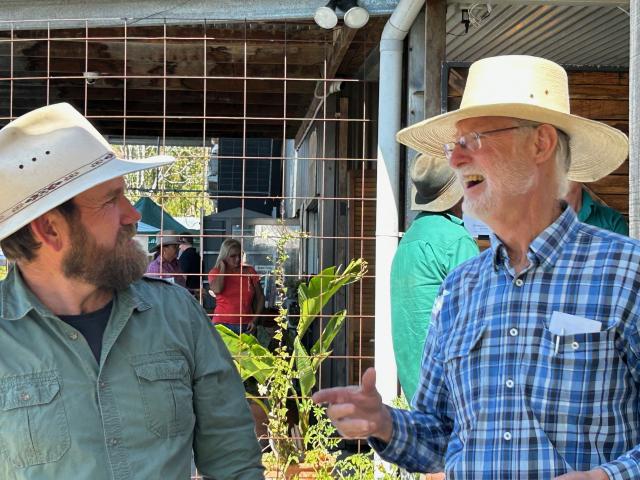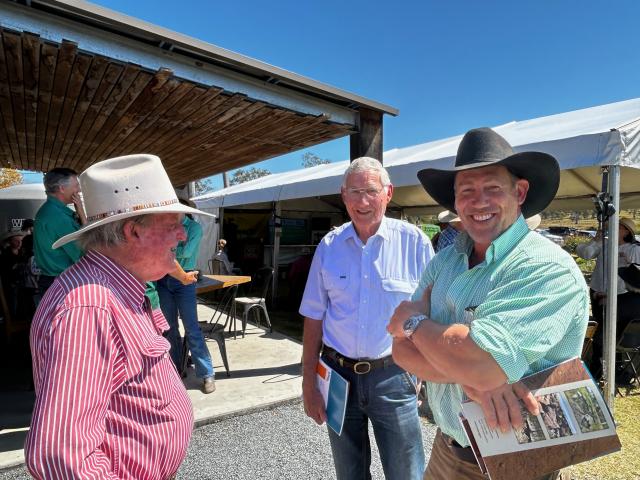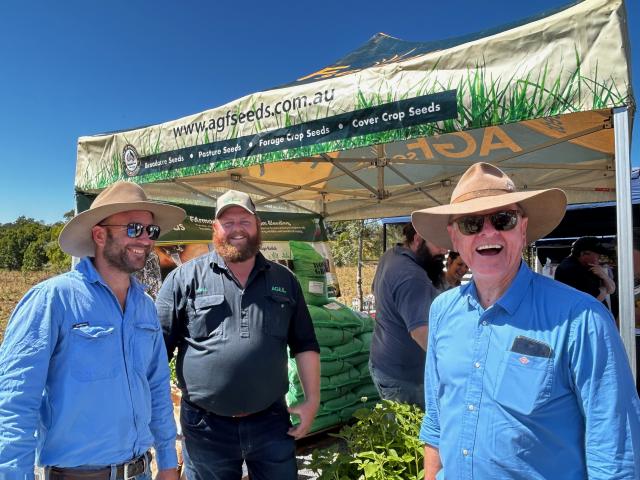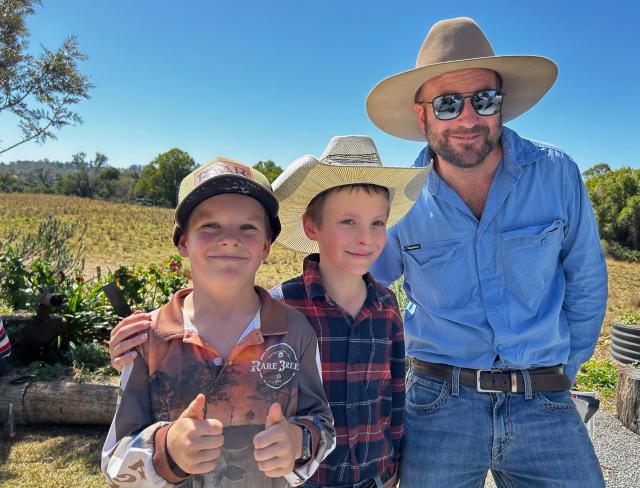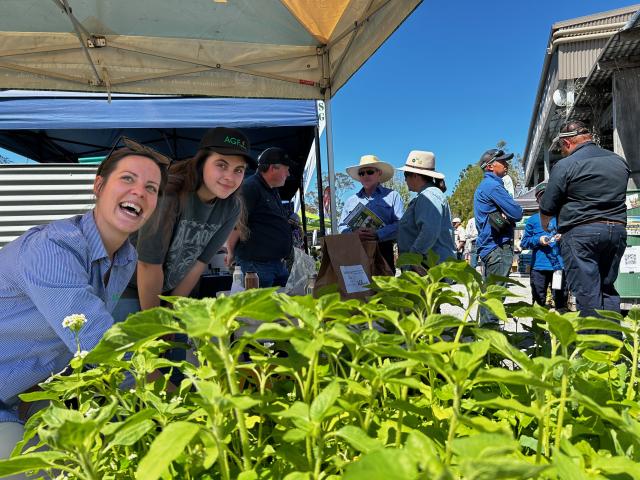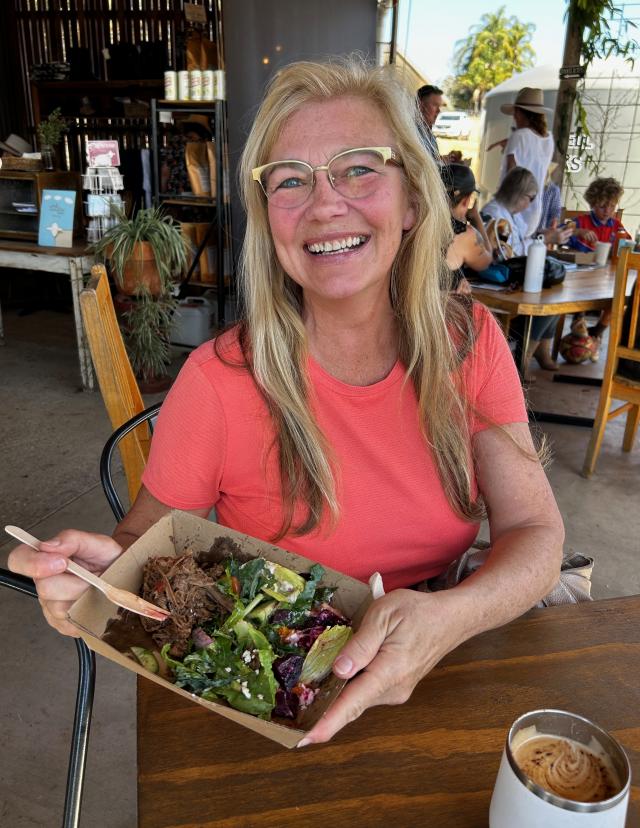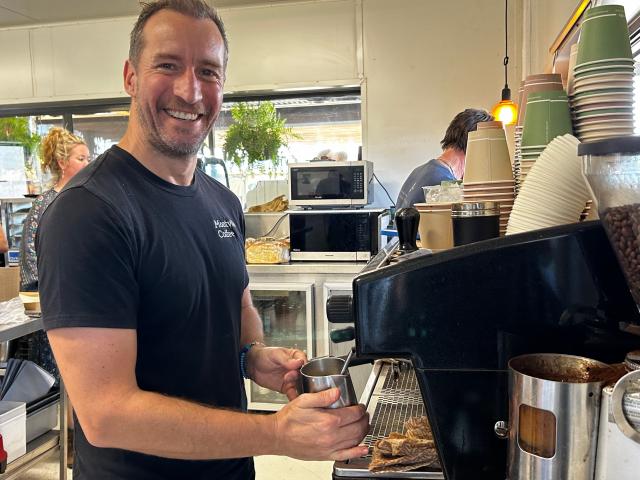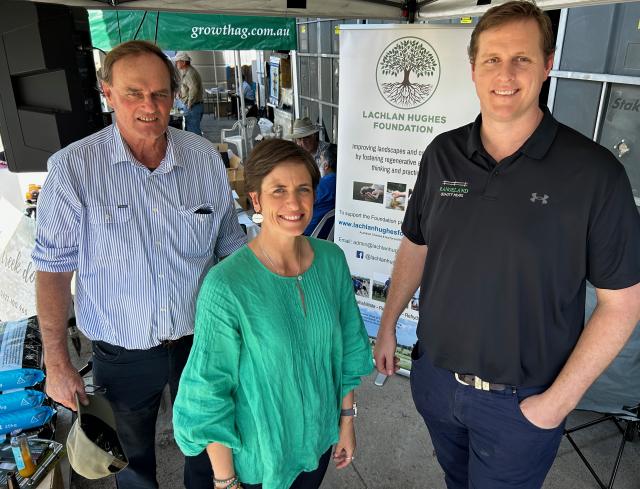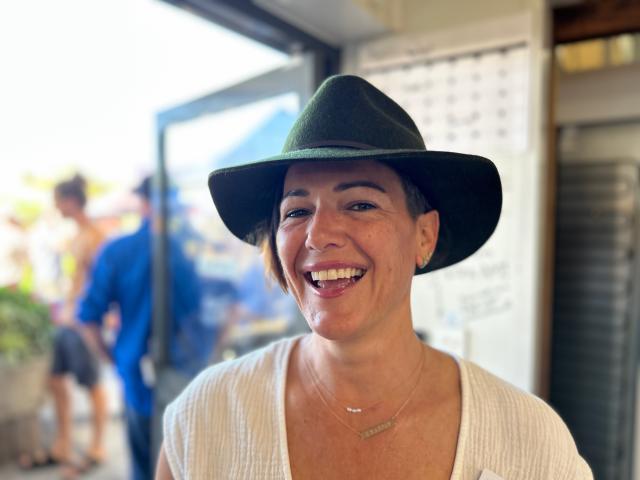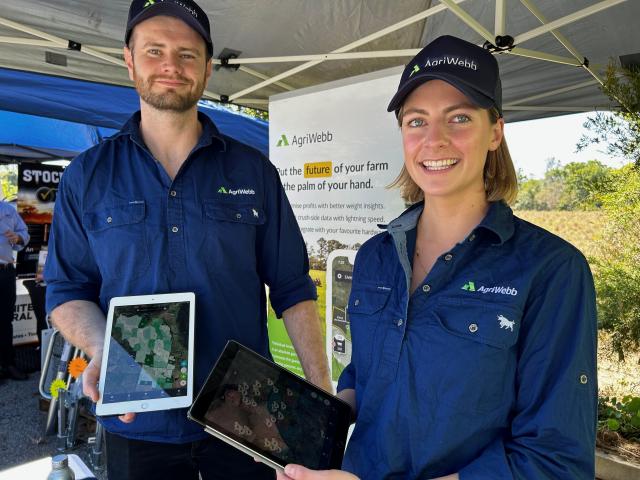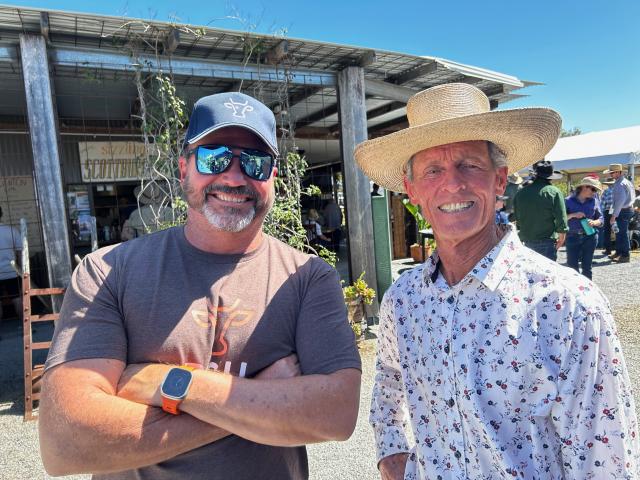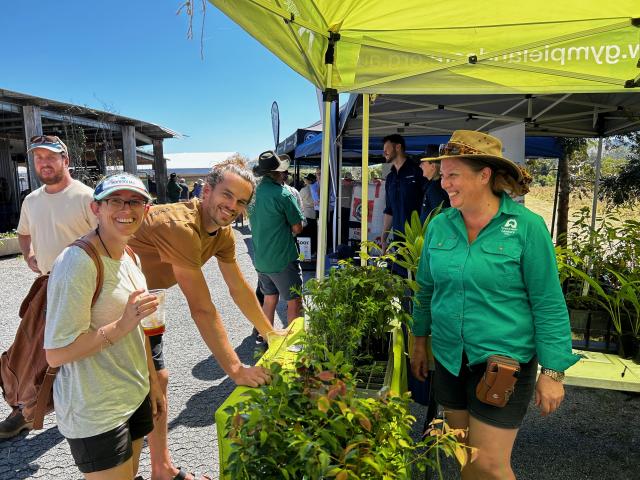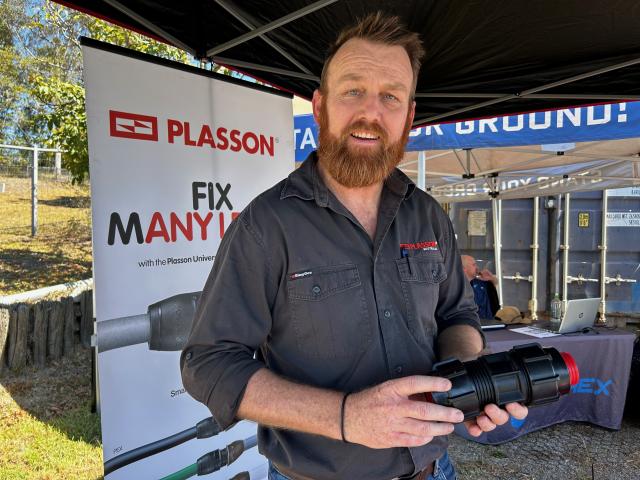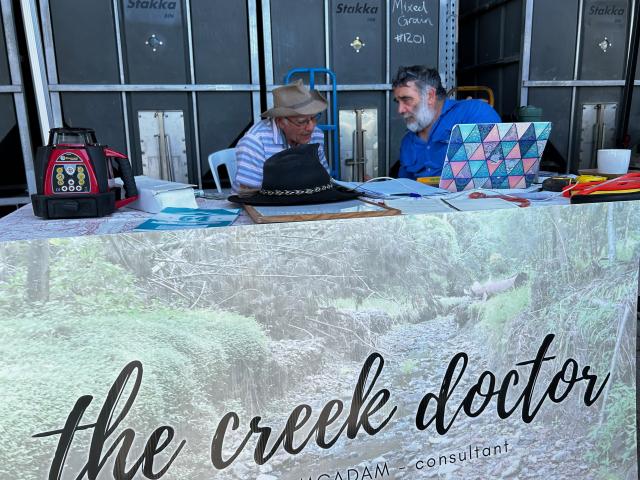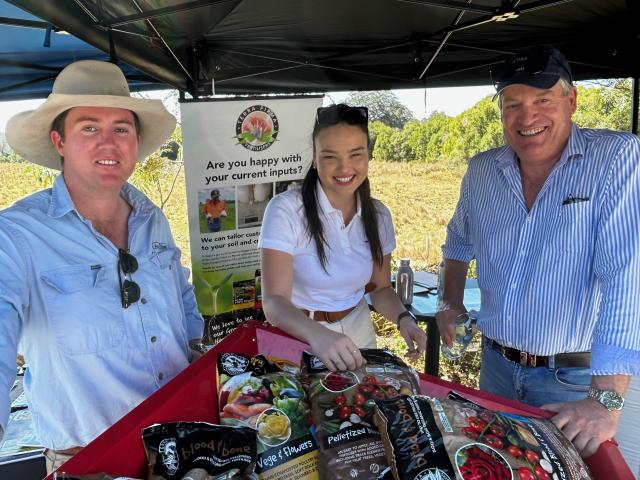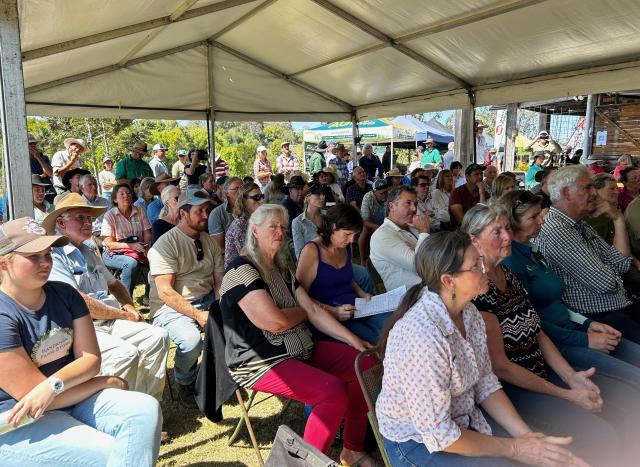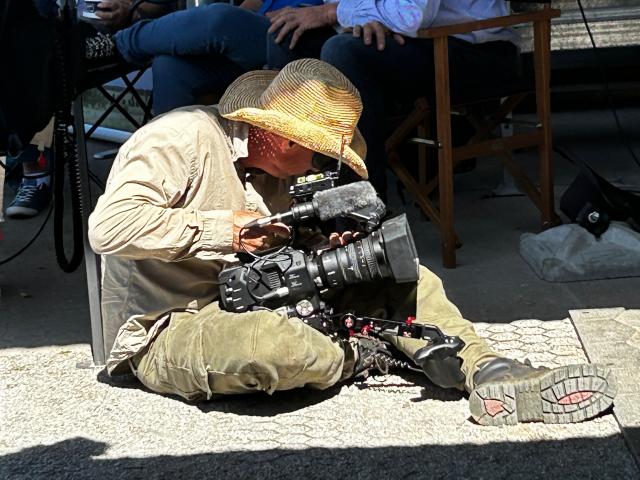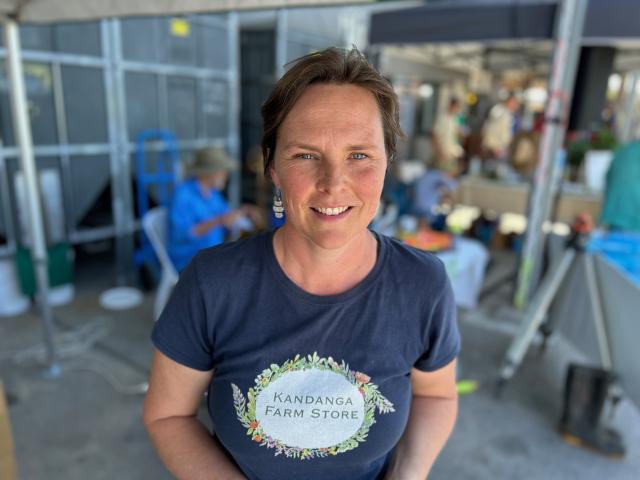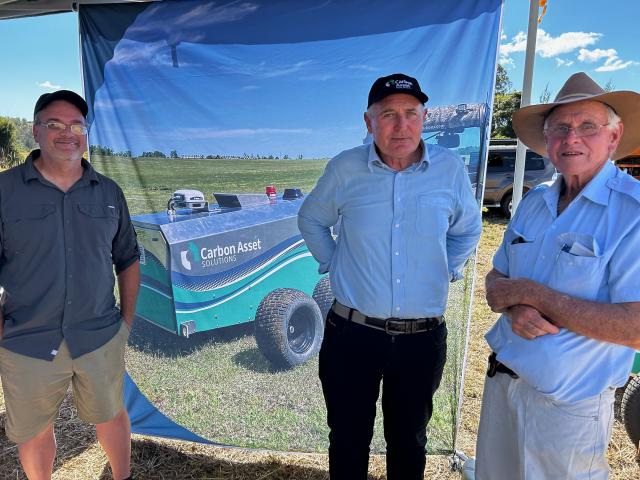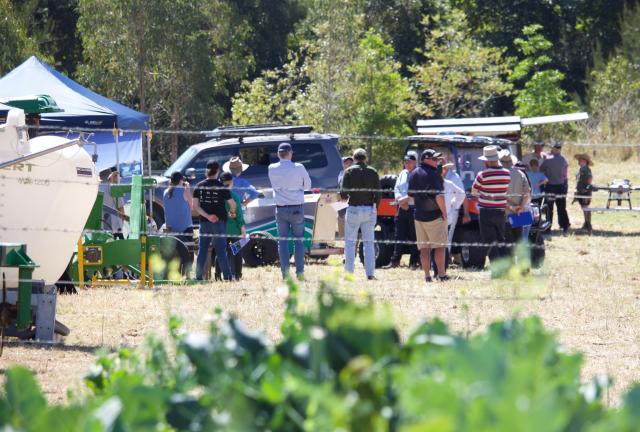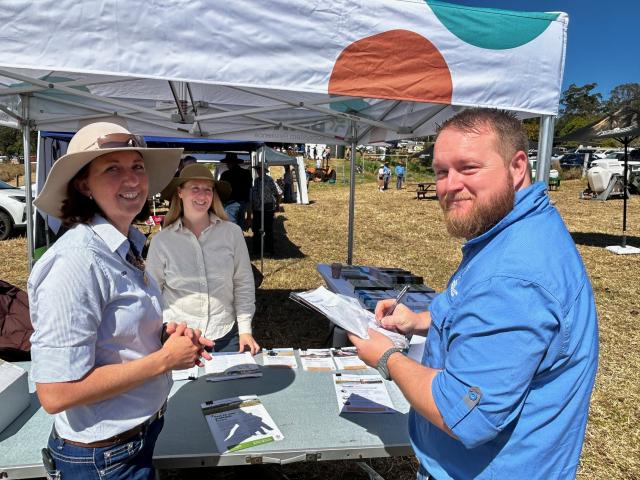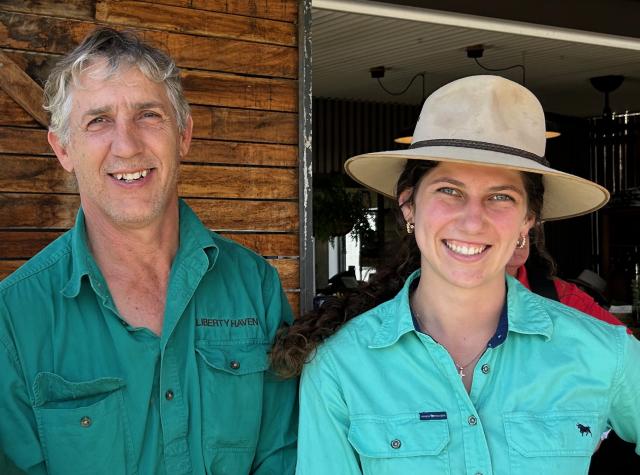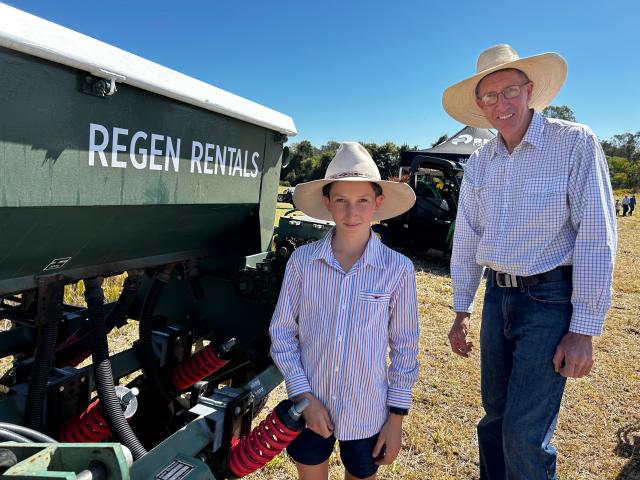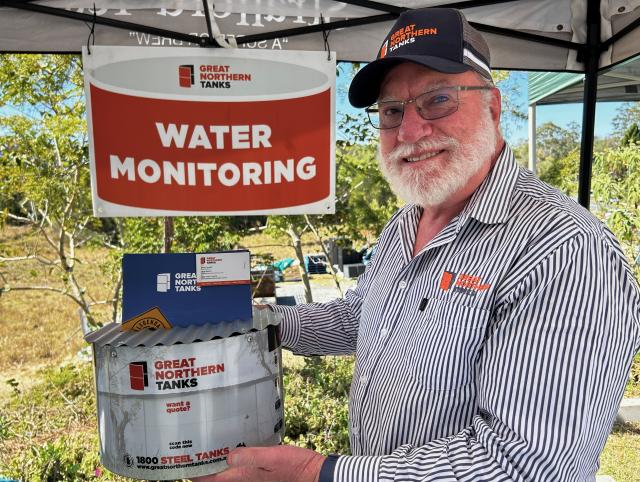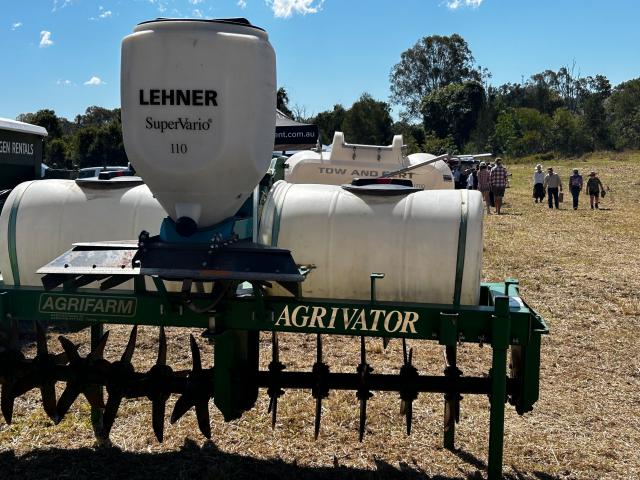The proof is in the pudding … but in the case of Agvention 2023 it was in the sausage rolls and slow-cooked brisket.
There was not a lot left in the kitchen after this year’s regenerative farming field day at Kandanga.
Hosted by Tim and Amber Scott of Kandanga Farm Store, the day was very successful, with more than 300 through the gate on Friday.
For Amber, success is measured by whether people who come, who exhibit and who speak are happy with the event.
“Agvention showed me that regenerative farming is a journey.
“People are from different parts of that journey.
“This year we had people who could speak to all of those.’’
And there was a high level of engagement in subjects ranging from drone seeding and fertilising to carbon testing in the soil, from ways to combat buffalo fly to having a 100-year plan for sustainable farming.
As Australia’s only regenerative agriculture field day of its type, Agvention is now firmly on the map, with Tim and Amber looking forward to the first Friday in September again next year to a bigger and better event.
“Food was a big part of this year,’’ Amber said.
“We are all there to learn how to produce better food.’’
While Agvention has taken regen farming a step further, the irony is the more successful the farmers are the less they will need inputs from suppliers such as Kandanga Farm Store.
It is a much more sustainable way of farming, with less impact on the land while building the quality of the soil.
“The regen community is growing very rapidly yet is still a minority,’’ Amber said, “but there are still lots of variations on the farming method.
“The key gain is people are starting to ask questions about where they get their food.
“We have got to make it easier for consumers to access good, clean and fair produce … and consumers need to care a bit more.’’
The aim of regenerative agriculture is to achieve increasing farm outputs from decreasing inputs.
Outputs are measured in their whole, not just quantity of yield.
Considerations such as nutrient density, ecological impact and soil health improvement all need to be accounted for.
Largely, this is achieved by mimicking nature, Amber said. That is re-engaging natural cycles rather than artificial ones and understanding we are part of nature and not above it.
Gympie & District Landcare’s biological services manager Yvonne Hennell spoke about her studies of dung beetles in the Wide Bay region and how they interrupt the buffalo fly breeding cycle by getting rid of the manure from cattle.
These are the understated workers of the Australian landscape. They are regenerating the soil one dung ball at a time by improving the biodynamics of the topsoil.
Tests even show that those breeds that work at night navigate by the stars.
This brings us to another interesting set-up with Hamish Macdonald of Carbon Asset Solutions demonstrating a new system of measuring the level of carbon in the soil in a matter of moments. This will have big ramifications in the future.
Anna Hughes, from the Lachlan Hughes Foundation, was inspirational in that the foundation is designed to help young people on the land to go on to reach their full potential.
At the same time she talked about the transformation of the family grazing and grain property in the Maranoa towards regenerative farming and the syntropic gardens they are creating that are changing the landscape as well as their way of life.
“Resilience is a word that’s passed around easily,’’ Anna said. “It’s much better to be able to stand up and do it.’’
THE 100-YEAR FARM PLAN
A highly-popular guest speaker at Agvention was Randal Breen of Echo Valley Farm at Goomburra on the Darling Downs.
For the past nine years Randal, along with his wife Juanita and their children Bridey and Eli, have been operating a stacked, multi-species, holistic operation.
“We run a strict integrated farming system, focused on healing the country and building the soil,’’ Randal said. “We run beef cattle, pastured pigs, nomadic pastured hens and multi species cover cropping to help build the soil.
“We started in 2014 to farm regeneratively but in nine years we have experienced drought, fire, flood, mouse plague and Covid-19.
“All these were of once in 100 years proportions.
“Only through having a strong holistic vision of a 100-year plan have we been able to get through these things.’’
That attracted them to agroecology – a method of farming practice that works with the land and environment in a sustainable and regenerative way.
The farm started with chickens and now runs about 2000 hens in a pastured system where they are rotated around the pasture in caravans on wheels.
Cattle are rotationally grazed throughout the 650 acres and pigs forage in the previously under-utilised native forest areas. Mixed pasture cropping provides fodder as well as bringing biodiversity back into the soil.
“The 100-year plan extends beyond me as an individual,’’ Randal said, “to a vision that’s bigger than myself.
“We develop a set of testing questions so when we have to make a decision about what’s going to impact the landscape, what are the things we are going to ask ourselves all the time to tell us whether it’s a good idea or not?
“Is it good for the animal, good for the land, good for the farmer and ultimately good for the people we feed.
“With food production, who is normally prioritised? Those who want clean, who want cheap, who want it fast.
“If that becomes the priority the other three things fall away, so it is the farmer, the landscape or the animal which is falling apart.
“We need to celebrate the strength of each animal, allowing them to express their natural instincts.
“Grass will grow seven times faster if it is grazed, rather than cut by a mechanical harvester.
“We have to put ourselves in the circle of the eco system, not above it.
“Holisticly managed cattle are moved regularly based on the landscape, the function and desired outcome. We move them every one to 10 days.
“Nature is a complex adaptive system. We are seeking to be the same.
“It’s all about observation and what you’re seeking to achieve. The longer you leave them in one place, the longer you have to let the land rest.
“We move our chooks every seven days. There are 500 hens to the hectare. They are landscape sanitisers as every thousand birds puts out 20 tons of manure.
“We are building the fertility of the land one egg at a time.’’
For the pastured pigs the Breens brought 1000 tons of food waste to be composted by the animals.
In these ways they reinvigorate the landscape, minimise disturbance and maintain cover.
“We have learnt that over time, the best solution is not to intervene,’’ Randal said. “Just observe.
“We let all things grow as nature doesn’t always allow you to achieve the outcome you want.
“The quickest way to make money farming is not to spend money – look at ways that are good for you.
“It is vital in a truly regenerative farming system that we reconnect with the people that eat our food, and share with them the way that food is produced.
“Increased soil health means increased human health.
“By building biodiversity, we build resilience and ultimately abundance.’’
This resilience is reflected in the ways Echo Valley Farm distribute their food.
They distribute their food by direct supply, through their shop and by CSA – community supported agriculture.
“CSA is more than a box scheme,’’ Randal said, “… it creates community.
“The supporter receives a regular box of fresh nutrient-dense and ethically produced food direct from the producer for a year.
“It offers an alternative model of agriculture and food distribution that allows the producer, and consumer to share both the risks and benefits of farming.
“This is about building a deep relationship with the people that produce it.’’
This has seen supporters invest in the farm in a number of ways in order to feel they are part of the process. This can be through direct funding to attending tree-planting days.
“More importantly,’’ Randal said, “they are engaging in a risk and reward system.
“By doing this we can get through times of poor production to when there is abundance.’’
CONCLUSION
The highlight of Agvention 2023 was the overall curiosity about regenerative and similar forms of farming, and how that is being shared by many others.
There were visitors, speakers and exhibitors from coastal areas as well as the Mary Valley and hinterland, from Western Australia and New Zealand, from throughout Queensland, Victoria and New South Wales.
As the dust settles on this year’s event we can start looking forward to 2024. … and more of those delicious K2 Beef sausage rolls with chutney.
After all, it’s all about the food in the end.
Yet what is it about the proof being in the pudding?
Today it is an expression that means the value, quality, or truth of something must be judged based on direct experience with it or on its results. Yet the expression dates back to the 14th century: The proof of the pudding is in the eating.

